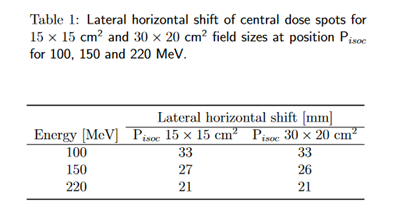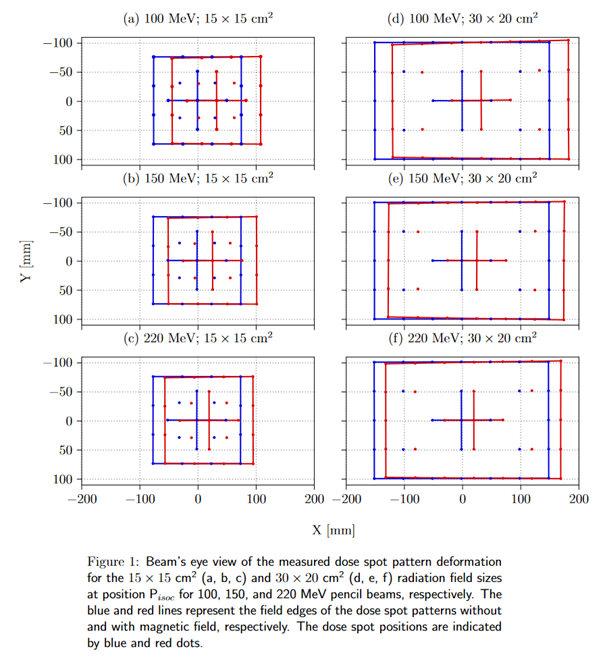2D dosimetric impact of an in-beam MR magnetic field on scanned proton pencil beam spot fields
Benjamin Gebauer,
Germany
PD-0252
Abstract
2D dosimetric impact of an in-beam MR magnetic field on scanned proton pencil beam spot fields
Authors: Benjamin Gebauer1,2, Jörg Pawelke1,2, Aswin Hoffmann1,3,4, Armin Lühr5
1OncoRay National Center for Radiation Research in Oncology, Faculty of Medicine and University Hospital Carl Gustav Carus, Technische Universität Dresden, Helmholtz-Zentrum Dresden-Rossendorf, Dresden, Germany; 2Institute of Radiooncology-OncoRay, Helmholtz-Zentrum Dresden-Rossendorf, Dresden, Germany; 3Institute of Radiooncology-OncoRay, Helmholtz-Zentrum Dresden-Rossendorf , Dresden, Germany; 4Department of Radiotherapy and Radiation Oncology, Faculty of Medicine and University Hospital Carl Gustav Carus, Technische Universität Dresden, Dresden, Germany; 5Department of Physics, TU Dortmund University, Dortmund, Germany
Show Affiliations
Hide Affiliations
Purpose or Objective
Magnetic resonance imaging-integrated proton therapy (MRiPT) is considered a next step in advancing image guidance for proton therapy as it is expected to improve the targeting precision. However, the presence of the MR magnetic field poses a challenge to the dose delivery due to the Lorentz force affecting the proton beam path. This study aims to investigate the dosimetric impact of the static magnetic (B0) field of an in-beam MR scanner on the delivery of scanned proton pencil beams.
Material and Methods
An MRiPT prototype comprising a horizontal pencil beam scanning beamline and an open 0.32 T in-beam MR scanner with a B0 field oriented perpendicular to the central beam axis was used to measure the 2D dosimetric impact of the B0 imaging and fringe field on proton beam transport. Beam transmission measurements in-air were conducted for three proton energies (100, 150, and 220 MeV) and two spot maps (15×15 cm² and 30×20 cm²). 2D relative dose spot profiles were measured with EBT3 films placed vertically in the imaging field (position P_isoc) without and with the B0 field. P_isoc was located centrally in the imaging volume at 58.2 cm and 122.4 cm downstream of the beam isocenter and exit window, respectively. A 2D Gaussian fit was applied to each dose spot to determine its central position (X, Y), minimum and maximum lateral standard deviation (σ_min and σ_max), orientation (θ), and eccentricity (ε).
Results
Three concurrent effects were observed: (a) lateral beam deflection of all spots, (b) asymmetric trapezoidal deformation of the radiation field (Figure 1), and (c) deformation and rotation of individual dose spots. The lateral deflection was energy-dependent and consistent for both field s within the uncertainty of the measurements (Table 1). The field deformation was more pronounced for the 30×20 cm² field than for the 15×15 cm² field, indicating a field dependence. At P_isoc for the 15×15 cm² field 100 MeV beams the σ_max decreased by up to 3.66%, while σ_min increased by a maximum of 2.15%. The dose spot eccentricity underwent minor changes with a maximum decrease and increase in ε of 0.08 and 0.02, respectively. The spot orientation changed by a maximum θ of 5.39°. Similar effects were observed at the higher proton energies but to a lesser extent.


Conclusion
For the first time, the 2D dosimetric impact of scanned proton pencil beams traversing the B0 imaging and fringe field of an in-beam MR prototype on the proton beam path, radiation field shape, and dose spot form has been measured in air. The results demonstrate the complex energy- and position-dependent transport behaviour of the pencil beams that requires the 3D B0 field to be taken into account by future MRiPT treatment planning systems. Further investigations are mandatory to assess the dosimetric effects of the B0 field on proton beams delivered with range shifters positioned inside the B0 field and on beams delivered in homogeneous and inhomogeneous target volume media.